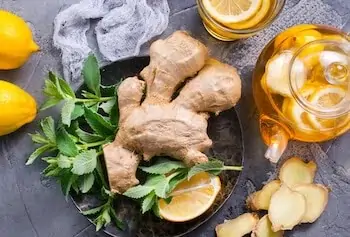Are you wondering about breastmilk in the final days before giving birth? Or perhaps you’ve just had your little bundle and find it a struggle to get more milk to your hungry baby. Whatever the case, I’m here to help you out with some great tips that will get things flowing.
Before I get into those though, I’d like to tell you about when my eldest was born. I’ve mentioned in other posts about Vivien, my breastfeeding coach, I found through La Leche League. Vivien was a godsend before, during, and after I had my first daughter. She came to the hospital right after I’d been wheeled back into my hospital room after the c-section.
I was so happy to see her because I’d only just been handed my daughter for the first time, and I was scared to death. How in the world was I supposed to take care of this tiny person? Just as I was about to freak out completely, Vivien helped me get her latched on. With that strong latch, I had so much milk; it was out of control. In fact, they had to bring me a pump so I could get some relief. My boobs were huge. Think Dolly Parton. 😛

I tell you this because the very first thing I want you to do is to make sure you get a good latch. That latch sends signals to your brain, telling it, “Hey! We need some more milk down here!”
It’s why I always tell everyone that they should contact LLL to find someone nearby that can help. You will find much love and support with that group and plenty of new friends who will really help as you feel your way into this whole mom-thing.
Honestly,
There are things you can eat that will really help you out, though. And I’m going to get into that in just a moment, however, aside from getting a breastfeeding coach or lactation consultant to help you ensure you get that perfect latch, make sure you also do a few other things. When they are used with lactogenic foods, you’ll have even more success with breast milk production.
Things to Try Before Eating Lactogenic Foods
I want to emphasize that you can do these things AND eat the lactogenic foods I’m going to discuss below. But like a good latch, these other things can be the tipping point that’s holding you back.
For one, getting into a comfortable position is crucial for milk flow. I can tell you any time I’ve ever been uncomfortable and tried to nurse my girls or pump my milk, and it barely came out even when my breasts each felt like they could win a contest for World’s Largest Watermelon. So, get comfortable. And show some skin! No, not like that, but raise your shirt so your baby’s skin touches the skin on your belly. That bond between you is incredible, and your body gets the message really quick to send more milk.
You can also try lightly squeezing your breasts when you’re nursing your baby to move that milk. Feeding or pumping frequently will help build your milk supply too.
As for things you might be doing that are hindering your milk production without you realizing it, anything that binds your boobs too tightly is a no-no. Also, certain medications could affect it (like for allergies), so if you’re taking something, be sure to talk to your doctor about its impact. And I hope that none of you smoke, but if you do, no smoking! You’re hindering your breastmilk supply!
Ok, enough lecture there. Let’s move on to lactogenic foods to pop onto your plate and make your milk runneth over.
10 Lactogenic Foods You Should Be Eating
I’d like to mention that the tips I’m going to provide are inspired by a wonderful book called Mother Food: A Breastfeeding Diet Guide. It’s written by Hilary Jacobson and is endorsed by LLL as well as board-certified lactation consultants.
Your first step before you dig into any food is to make sure you’re drinking enough water. Along with that, you should be eating enough.
Breastfeeding burns about 500 calories per day, and you’ll need extra calories to feed that sweet baby. So, be plentiful, and now, make room on your plate for these foods.
Fennel
Fennel is a well-studied lactogenic food. You can prepare it however you like (it’s quite good sautéed in butter) or even just eat it raw in a salad.
Leafy Greens
Those dark leafy green veggies have tons of vitamins and minerals that are great for your nutrition. They also have phytoestrogen to bring on lactation. Look for Swiss chard, spinach, arugula, and collard greens, to name a few.
Oats

Perhaps one of the best lactogenic foods out there is oats. They’re brimming with vitamins, minerals, proteins, and trace elements that boost the metabolism of fats, nourish nerves and help your mood. Both the seed and leaf were taken in traditional medicine though you can simply enjoy more oatmeal than usual.
As soon as you can and as often as you can, start eating oatmeal by the bowlful for breakfast or for a snack.
Healthy Fats
As you’ve likely read before (here or elsewhere), what you eat comes through in the milk your baby gets from you. That being said, you have the opportunity to treat her to a variety of flavors. The same goes for nutrients.
Now, I’m not saying you shouldn’t indulge that craving you’ve had for cheese fries for the last 9 months. One is fine. But the rest of your fats should be of the healthy variety. These are important for cellular metabolism as well as neural metabolism. Basically, the healthy fats you eat will help create an excellent composition of nourishing fats in your milk to help your baby thrive.
To get these fats, have a salad with ¼-teaspoon of cold-pressed extra virgin olive oil drizzled on top. Use the same measurement for sesame oil, flaxseed oil, or coconut oil. Even butter in a thin slab can be used atop your steamed veggies for added flavor and benefit to the baby.
Swap Out Coffee
This isn’t a food per se, but if you’ve been having trouble getting enough milk out of those boobs, you might want to forgo your coffee for a bit in favor of something that will help you burst forth with milk. As I mentioned, water is always a crucial element. Try making sure you’ve been drinking enough of it. And if you’ve been drinking more than one cup of coffee a day, that might be the reason you’re having trouble now.
Instead, you can find imitation coffee brands that use chicory or dandelion along with malt. Each one of these is a lactogenic ingredient. Cafix and Caro are two brands to look into. I never gave up coffee. I merely limited my intake and made sure to nurse my daughters before I had my coffee.
Garlic and Onions

Oh, garlic! You know, in China and well, most of Asia, everyone smells of garlic. You notice less and less when you live there because there’s a very good chance you smell of it too. And onions. Let’s not forget those. My husband is forever trying to get the girls to eat onions, but each of them will pick out the teensiest piece of one from spaghetti sauce and frown.
Still, giving baby a taste of garlic and onions from your breastmilk is great though since they can get that flavor, you may want to add these things in slowly. In other words, now is not the time to try out that roasted garlic recipe you have been dying to try.
Ginger
I remember when I didn’t feel so hot during my pregnancies that my husband and his family would give me ginger tea. It really does help and is something I use even now if my stomach gets upset. I also drink it when I start coming down with something. I’m a big believer in ginger. In Asian countries, they use it for these reasons as well as for lactation benefits. It’s a natural way to get your milk going.
Nutritional and Brewer’s Yeast
Jacobson’s book also discusses how nutritional or brewer’s yeast can help you out too. Vegans often use it to get that cheesy and savory flavor without any animal products. Jacobson notes that many mothers feel more energetic and have greater mental balance when they take it. Do watch the baby’s reaction though, as some mothers report gassiness and hence, fussiness in the baby.
Green Papaya
Oh, man. If I had a dollar for every time I was given this for my breast milk, I’d have my own private island. Not that I’m complaining. Green papaya is delicious. And it has tons of vitamins and minerals you need. My mother-in-law would simmer it up until it was soft since it’s not like the ripe variety you can just dig into.
At first,
I was really annoyed because I love papayas. “Why isn’t she just getting me the ripe ones?” I remember asking my husband. He said that she claimed it was good for my breast milk. I rolled my eyes, but then I went to my laptop and tried to see if it was some hocus pocus myth that all little old Chinese women believe or if it was true.
It turns out; my mother-in-law was smarter than I gave her credit for. 😮
Here in the states, you don’t really see it, but you can take a supplement of it. As always, with any supplement or even vitamins, make sure you speak to your doctor about it first to make sure no conflicts are managing any medical conditions you might have.
Sesame Seeds
In Asia, they put those black sesame seeds as a finishing touch on just about everything. Good thing I love them. It’s said they boost milk production, even the light-colored ones. So add them to salads, finish your dishes with them, or even get tahini (that’s sesame seed ‘butter,’ if you will). It has tons of calcium, which can really help if you find baby reacts with gas when you have cheese or milk.
A Word on Lactogenic Food Dosages
Because each of us is different, we might need to eat more or less of these foods. As I mentioned, I had no trouble producing breast milk. There are plenty of women like me, and perhaps you won’t have any worries either. Others of you may need to eat these foods to help give yourself a boost.
Why is that the case?
As I said, that latch at the beginning when your baby is first born is one of the most important things. Get that latch done right. Other times though, you may get a perfect latch and then find your milk supply is petering off. You’ll need to think about what you’re doing to help solve that.
Perhaps you’re not getting enough sleep, stressing out, not drinking enough water, not getting enough vitamins and minerals that you need, and plenty of other things. I recommend you look to a lactation consultant to help you figure out the root cause while you eat more lactogenic foods.
I also want to tell you one thing that Jacobson makes very clear in her book. If you have a stable milk supply and you take ALL these lactogenic foods in large amounts, you’re going to have engorgement issues which could cause plugged-up ducts and let me tell you, that hurts.
Note that…
Colic can come on from too much foremilk, and if you have too strong a let-down, that might lead to sucking difficulties. The key, as it always seems to be, is balance. Start slowly and see if you need to increase it. And if you notice baby seems fussier than usual when you add in one of these foods, see how she responds when you cut down on your intake of it.
Best of luck, loves! You’ve got this! 😀
Leslie Berry lives with her husband and two young daughters in Los Altos, California, where she loves helping other moms get comfortable with motherhood and embracing the insanity with facts peppered with laughs.
She loves eating too much sushi, exercising, and jamming out on her Fender. Read more about Leslie here.






